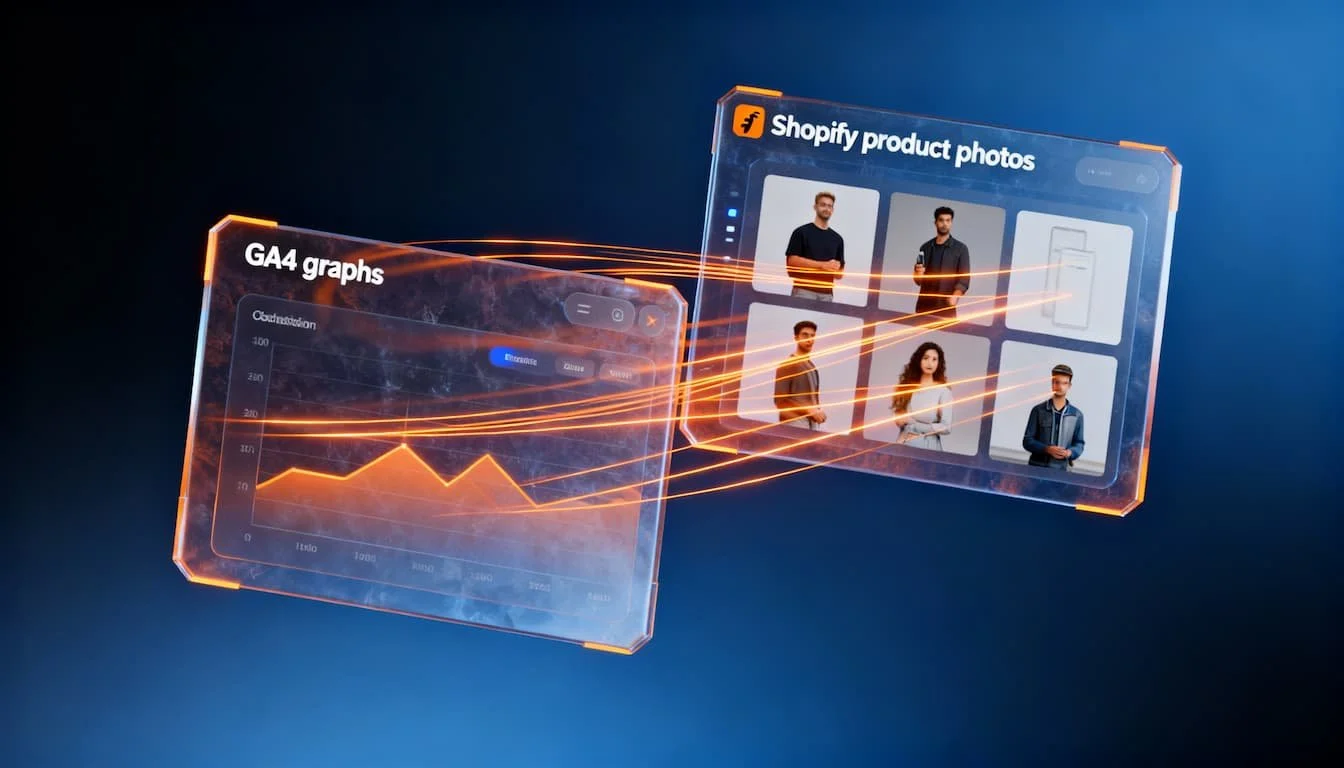Writing better prompts: how to get more out of AI tools in 2026
The quality of AI output depends entirely on the input you provide. A poorly formulated prompt yields generic results, while a sharp question can provide exactly what you're looking for. For entrepreneurs and marketers who want to save time and achieve better results, prompt engineering has become an essential skill.
- Basic formula: Role + Goal + Context + Details for effective AI communication
- Crucial elements: Assign a specific role, clear goals, sufficient context, desired output format
- Common mistakes: Being too vague, not assigning a role, forgetting the output form, asking too much at once
- Iterative process: Test, refine, and adjust for optimal results
- Practical value: Better prompts save time, deliver better output, and increase AI effectiveness
Are you already using AI in your marketing? Then also read our guide on top AI tools for marketers in 2025 for practical applications.
Why prompt quality makes the difference
AI tools like ChatGPT, Claude, or Gemini are powerful, but they lack context and intuition. They interpret literally what you ask, without reading between the lines. A vague question yields a vague answer. A specific, targeted prompt generates output that you can use directly.
“The quality of AI output depends entirely on the quality of the prompts you give - garbage in, garbage out applies here more than ever”
Source: OpenAI - GPT-4 Technical Report & Best Practices
For entrepreneurs who want to use AI for growth, be sure to check out our AI-driven marketing strategies for 2025.
The ROCKET formula for effective prompts
Instead of asking questions randomly, use this structured approach:
Role - Who should the AI be?
Objective - What needs to be done?
Context - For whom and in what situation?
Kuality requirements - Which specifications?
Example - Give an example (optional)
Tone - Which tone and style?
Example of the ROCKET formula in action
Bad: "Write a text about lead generation"
Good:
Role: You are a B2B marketing consultant with 10 years of experience.
Objective: Write a practical guide of 800 words.
Context: For SMEs in the technology sector who are struggling with lead quality.
Quality requirements: Use 5 concrete tactics, each with a practical example.
Tone: Professional but accessible, avoid jargon.
Want to learn more about lead generation? Check out our lead generation services for SMEs.
“The difference between a good and bad result from AI often lies in one or two words in your prompt - specificity is everything”
Source: Andrej Karpathy - Neural Networks: Zero to Hero Course
Advanced prompting techniques that work
1. Chain of thought prompting
Let the AI reason step by step by adding "think step by step".
Example: You are an e-commerce consultant. A Shopify store has a 2% conversion rate, but the sector average is 3.5%. Analyze step by step which factors could be causing this and give 3 priority improvement actions.
For more tips on conversion optimization, read our article on CRO in 2025 with AI and personalization.
2. Few-shot prompting
Give examples of desired output.
Example: You are a copywriter. Write product descriptions in this style:
Example 1: "This organic coffee from Colombia awakens your senses. Every sip brings you the warmth of the Andes mountains."
Example 2: "Handmade soap with lavender. Your skin feels soft, your bathroom smells like Provence."
Now your version for: eco-friendly bamboo toothbrushes.
3. Persona prompting
Let the AI answer from a specific perspective.
Example: You are Emma, 34 years old, marketing manager at a scale-up with 50 employees. You have a limited budget but need to show results. Which 3 marketing channels would you prioritize and why?
Practical prompt templates for marketing
For content strategy
Template: You are a content strategy expert. Create a content calendar for [company/sector] for Q1 2025.
Target audience: [description]
Channels: [LinkedIn/blog/email]
Goal: [leads/awareness/sales]
Tone: [professional/casual/expert] Provide 4 content ideas per month with title, platform, and call-to-action.
More about content creation with AI? Read our article about AI copywriting in 2025: human or machine.
For ad copy
Template: You are a direct response copywriter. Write 3 Facebook ads for [product/service].
Target audience: [specific description]
Benefit: [biggest pain point you solve]
Length: maximum 125 characters
Include: urgency and social proof
Test different hooks
For professional advertising strategies, check out our performance marketing services.
For email marketing
Template: You are an email marketing specialist. Write a welcome sequence of 3 emails for new subscribers of [company].
Mail 1: Welcome + expectations
Mail 2: Social proof + value
Mail 3: Soft sell Tone: [warm/professional/expertise] Each maximum 150 words.
For SEO content
Template: You are an SEO content specialist. Write a 1200-word blog post about [topic] for [target audience].
Primary keyword: [main keyword]
Secondary keywords: [list of 3-5 keywords]
Structure: H1, H2, H3 with natural keyword integration
Tone: informative and accessible
Conclude with a clear call-to-action
Want to learn how SEO and AI work together? Read our article on combining SEO and AI for smart content strategies. For professional SEO support, check out our SEO services.
“Effective prompt engineering requires understanding how AI systems ‘think’ - it's a new skill that every professional must develop”
Source: Meta AI - Yann LeCun Profile
Common mistakes and how to avoid them
Mistake 1: Remaining too general
Mistake: "Create a marketing plan"
Better: "Create a 90-day lead generation strategy for a B2B SaaS startup with a €10k monthly budget"
Mistake 2: Not specifying an output format
Mistake: "Give tips for SEO"
Better: "Create a checklist with 10 SEO actions for local businesses, each with expected impact (high/medium/low)"
For local businesses specifically, read our article about local SEO in Belgium.
Mistake 3: Forgetting context
Mistake: "Write a product launch post"
Better: "Write a LinkedIn post for the launch of our new CRM module, aimed at sales managers in the Benelux"
Mistake 4: Not planning for iteration
Always start with "Version 1:" and ask for feedback to refine.
The RACE model for structured prompts
Another powerful method is the RACE model, specially developed for marketing prompts:
Reach - Who do you want to reach?
Act - What action should happen?
Convert - What is the desired result?
Engage - How do you maintain attention?
Read more about this model in our article about the RACE model for ChatGPT prompts.
Prompt optimization for different AI tools
ChatGPT specific tips
Use "Act as..." to clarify the role
Ask for sources with "Include sources"
For creativity: increase temperature in settings
Want a complete masterclass? Check out our ChatGPT masterclass 2025 guide.
Claude advantages
Excels in long documents and analysis
Provide more context, Claude can process that better
Explicitly ask for structure and formatting
Gemini strengths
Good at real-time information
Effective for data analysis prompts
Combine with Google Workspace for workflows
Measurable results from better prompts
The impact of structured prompts is measurable and significant. Research consistently shows better results for companies that systematically work on prompt optimization.
Practice confirms these figures. Dutch marketing agencies are at the forefront of prompt engineering, with impressive results.
For AI-driven automation in your company, discover our AI automation services.
“The best prompts provide context, specify the desired output, and include examples - this increases the chance of success by 70%”
Source: Fast.ai - Practical Deep Learning for Coders
Building your first prompt library
Step 1: Identify your most common tasks
Content creation (blogs, social media, ads)
Customer communication (emails, FAQs, support)
Strategy development (plans, analyses, reports)
Data analysis and interpretation
Step 2: Develop templates per category
Start with 3-5 basic templates that you use 80% of the time. Test these thoroughly before expanding.
Step 3: Test and document results
Keep track of which prompts give the best output for your specific use. Make notes of what works and what doesn't.
Step 4: Share and refine
Share successful prompts with your team and refine based on feedback and new experiences.
Want to get started right away with advanced techniques? Read our article on prompt engineering for advanced users.
The evolution towards autonomous AI and agents
The future goes beyond good prompts. We are evolving towards autonomous AI agents that perform complex tasks independently. Read more about this development in our article on autonomous AI and AI agents in marketing.
For companies that want to be at the forefront, now is the time to build AI skills. Start with prompt engineering, but keep an eye on broader developments.
From SEO to GEO: the future of findability
Prompt engineering is also becoming crucial for GEO (Generative Engine Optimization) - optimizing for AI search engines such as ChatGPT, Claude and Perplexity. Read our article on from SEO to GEO to be prepared for this shift.
Get started right away
Writing better prompts is a skill you develop by practicing. Start with the ROCKET formula, build a small library of your best prompts, and experiment with advanced techniques as you become more comfortable.
The difference between AI as a time-consuming toy or as a productivity booster lies in how you communicate with it. Invest in your prompt skills - the return is immediately visible.
For professional support with AI implementation in your company, check out our AI for growth services or schedule a free strategy consultation.

🚀 More leads, higher conversion, better ROI
This article gave you insights. Now it's time for action. Whether you want to build a profitable webshop, generate more revenue from performance marketing or SEO, or grow with AI-marketing - we'll help you move forward concretely.
💬 Discuss your challenge directly with Frederiek: Schedule a free strategy session or send us a message
📧 Prefer to email? Send your question to frederiek@clickforest.com or call +32 473 84 66 27
Strategy without action remains theory. Let's take your next step together.
Frequently asked questions about writing better prompts
-
A prompt is the instruction or question you give to an AI tool. It is similar to a briefing to a freelancer - the clearer you are, the better the result.
-
Research shows 40-73% better output with structured prompts versus free text questions. In practice, this often means the difference between usable content and something that needs to be completely rewritten.
-
The basic principles remain the same, but each tool has its own strengths. ChatGPT is good at creativity, Claude excels in analysis, Gemini performs strongly with real-time information.
-
With daily use, you will see clear improvement within 2-3 weeks. After 2-3 months, you will be able to apply advanced techniques.
-
Yes, but that is rarer than prompts that are too vague. If you notice that the AI is getting confused, break down complex tasks into smaller steps.
-
Create a document with categories (content, marketing, analysis) and mark your top 5 per category. Update monthly based on new experiences.
-
For complex tasks, yes, because AI models are often better trained on English data. For simple tasks, it doesn't matter much.
-
A good prompt generates output that you can use with minimal adjustments. If you have to rewrite a lot, optimize your prompt.
-
Test new variations monthly and update your library quarterly based on what works best for your specific use. AI tools evolve quickly, so keep experimenting.
Sources and references
Prompt engineering best practices and techniques:
Lakera: "The ultimate guide to prompt engineering in 2025" - https://www.lakera.ai/blog/prompt-engineering-guide
PromptMixer: "7 best practices for AI prompt engineering in 2025" - https://www.promptmixer.dev/blog/7-best-practices-for-ai-prompt-engineering-in-2025
PromptHub: "Prompt engineering principles for 2024" - https://www.prompthub.us/blog/prompt-engineering-principles-for-2024
OpenAI: "Best practices for prompt engineering with the OpenAI API" - https://help.openai.com/en/articles/6654000-best-practices-for-prompt-engineering-with-the-openai-api
ChatGPT and AI tools for marketing:
Team-GPT: "Best 25 ChatGPT prompts for marketing in 2025" - https://team-gpt.com/blog/chatgpt-prompts-for-marketing
HubSpot: "34 ChatGPT prompts that marketers should use" - https://blog.hubspot.com/marketing/chatgpt-prompts
WordStream: "20 completely awesome ChatGPT prompts for marketing" - https://www.wordstream.com/blog/ws/2023/05/08/chatgpt-prompts
AI adoption and trends:
TrendStatistics: "AI prompt engineering statistics - 2024-2023 facts, data and trends" - https://www.trendstatistics.com/technology/ai-prompt-engineering-statistics/
SolGuruz: "Top 10 AI prompt engineering trends shaping tech in 2025" - https://solguruz.com/blog/ai-prompt-engineering-trends/











